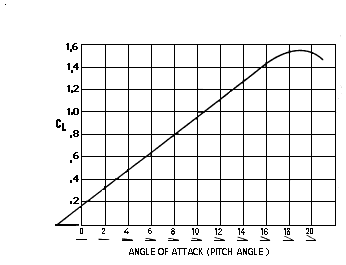10 Degrees AOA
Low AOA for windsurfing sail has been always challenging because this is where cambered, classical sail gives up. Great example of this is Foiling, where friction with water is greatly reduced and operating sail with high AOA is impossible. This is why foilers are using low cambered, tight leech sails. But the expense of the low camber is efficiency. One of the good properties of thick profile is ability to generate good amount of lift at low AOA. What's the reason curved plate thin profile stops working at low AOA? Lower (windward) surface at these angles develops low pressure pocket and with air speed increase, that low pressure will create opposite lift. Such a phenomena actually caused many fatalities in early hang gliding accidents.
Image below shows how different pressure redistribution is on thin and thick profiles.


What a stunning difference. Opposite to traditional thin profile, thick profile actually keeps building high pressure that contributes to lift even at 10 degrees AOA. To avoid negative pressure buildup under leading edge, sail needs to be in Hi all the time. In my next blog i will discuss how sail designers counter this obstacle.



















